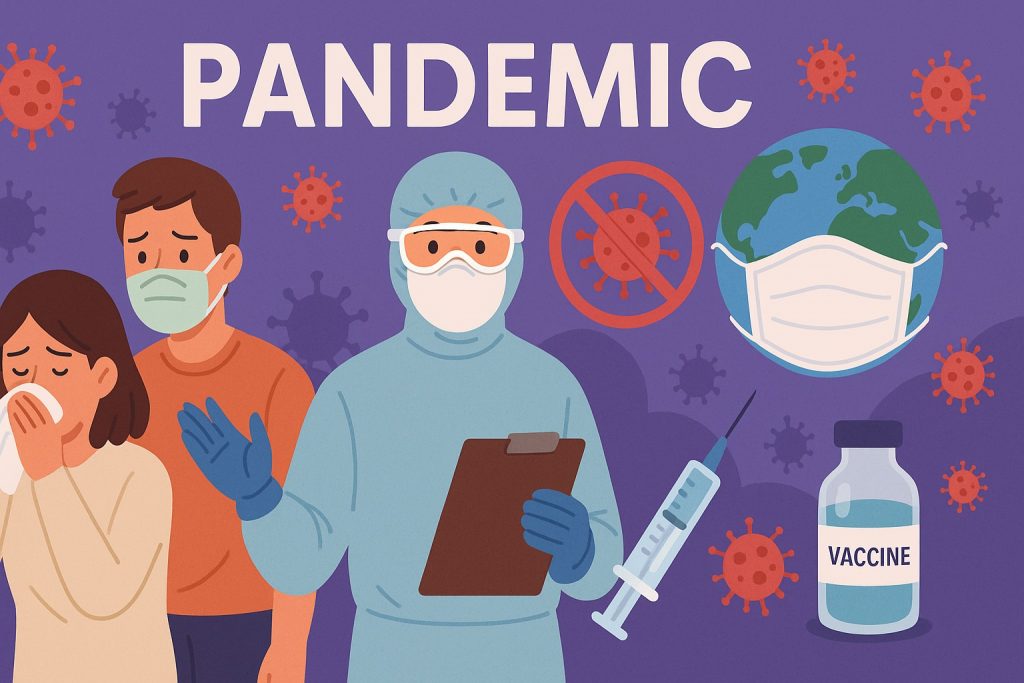A pandemic is the global spread of a new infectious disease that affects large numbers of people across countries and continents. Unlike a local outbreak or even an epidemic (which is more regional), a pandemic crosses borders and causes widespread disruption to health systems, economies, and daily life.
The word comes from Greek: “pan” (all) and “demos” (people), meaning it affects people everywhere.
How Do Pandemics Start?
Pandemics usually begin when a new virus or bacteria emerges and spreads easily from person to person, often because:
- The population has no prior immunity to the new pathogen.
- The disease is transmitted through air, touch, water, or animals.
- Global travel helps the disease move quickly across borders.
A pandemic can arise from mutations in viruses that allow them to infect humans more effectively or jump from animals to people (a process called zoonosis).
Examples of Major Pandemics
- The Black Death (1347–1351) – Bubonic plague killed over 50 million people in Europe.
- 1918 Influenza (“Spanish Flu”) – Infected a third of the global population and caused tens of millions of deaths.
- HIV/AIDS pandemic – Began in the late 20th century and continues to affect millions.
- COVID-19 (2019–present) – Caused by the novel coronavirus (SARS-CoV-2), leading to widespread illness, lockdowns, and economic impact.
How Do Pandemics Impact Society?
Pandemics affect every aspect of life, including:
- Health systems: Hospitals become overwhelmed, medical resources may run short.
- Economies: Business closures, job losses, and supply chain disruptions occur.
- Mental health: Isolation, fear, and uncertainty can lead to stress, depression, and anxiety.
- Education: Schools often close or shift to remote learning.
They also accelerate scientific innovation, including vaccine development, data sharing, and health technology.
How Are Pandemics Managed?
Key strategies include:
- Public health measures: Quarantine, masks, hand hygiene, and social distancing.
- Vaccination campaigns to build immunity.
- Testing and contact tracing to identify and isolate cases.
- Global cooperation between governments, scientists, and healthcare systems.
Preparedness, clear communication, and strong leadership are critical to containing the spread and minimizing harm.
Can We Prevent the Next Pandemic?
While it’s impossible to eliminate all risk, we can:
- Monitor new viruses in animals and humans (early detection).
- Improve global health systems.
- Educate the public on hygiene and vaccination.
- Reduce environmental destruction, which increases zoonotic disease risks.
Investing in pandemic preparedness saves lives and reduces long-term costs.
Glossary
- Pandemic – A global outbreak of an infectious disease.
- Zoonosis – A disease that spreads from animals to humans.
- Epidemic – A regional or national outbreak of disease.
- Herd immunity – When enough people are immune to a disease that its spread is reduced.
- Contact tracing – Identifying people who have been in contact with an infected person to prevent further spread.


